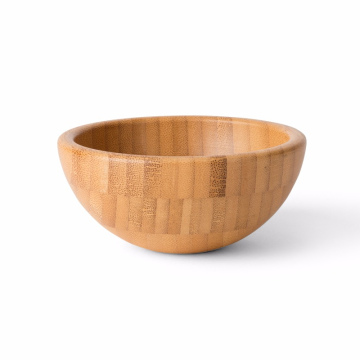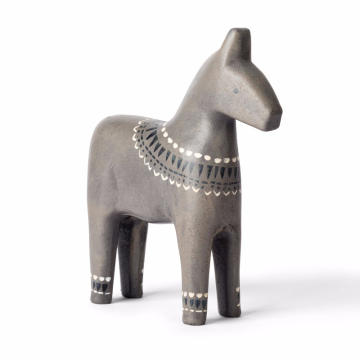Introduction
The allure of pasta in Spain has evolved significantly over the years, transforming from a simple imported dish to a beloved culinary staple that showcases the creativity of Spanish chefs. Initially introduced through trade routes and Italian influence, pasta has taken on a unique identity within Spanish gastronomy. The fusion of local ingredients, flavors, and culinary techniques has led to a burgeoning appreciation for pasta dishes that go beyond traditional Italian preparations.
In recent years, Spanish cuisine has embraced pasta as a versatile element that can be adapted to regional tastes and seasonal produce. This has resulted in innovative dishes that reflect the diverse culinary landscape of Spain. From hearty paella-inspired pasta to lighter offerings featuring fresh seafood, the possibilities are endless. As Spanish chefs explore and experiment with various pasta shapes and sauces, the resulting creations celebrate both the heritage of Italian cuisine and the richness of Spanish flavors.
Moreover, the growing awareness and appreciation of international cuisines among Spaniards have led to a surge in pasta-focused eateries, contributing to a vibrant dining culture. These establishments not only honor traditional recipes but also encourage culinary creativity, allowing chefs to reinterpret classic dishes in exciting new ways. This evolution emphasizes the synergistic relationship between Italian recipes and local produce, giving rise to innovative flavors and presentations that tantalize the palate.
Ultimately, this embrace of pasta within the Spanish culinary context invites diners to rethink their perceptions of this classic dish. Rather than being confined to its Italian roots, pasta in Spain serves as a canvas for culinary exploration, harmonizing traditional Italian techniques with the rich culinary tapestry of Spain. This guide will delve into top eateries that have mastered the art of pasta, showcasing the exceptional intertwining of these vibrant influences.
Top 5 Eateries for Pasta Lovers
For pasta enthusiasts exploring Spain, there is a plethora of dining options that offer unique and delightful experiences. Below is a curated list of the top five pasta restaurants that promise to satisfy your cravings for authentic Italian cuisine with a Spanish flair.
1. Trattoria Da Paolo - Located in the heart of Barcelona, this eatery is renowned for its handmade pasta. Diners rave about the Tagliatelle al Tartufo, a truffle-infused dish that has garnered much acclaim. Chef Paolo emphasizes the quality of ingredients, insisting on fresh, local produce to elevate traditional recipes. Patrons frequently cite the warm ambiance and attentive service as key highlights.
2. Osteria il Centro - Nestled in Madrid, Osteria il Centro captures the essence of Italian comfort food. Their signature dish, Lasagna alla Bolognese, is a crowd favorite, frequently praised for its rich, deep flavors. Customer testimonials often mention the cozy décor that brings a slice of Italy to the bustling Spanish city.
3. Pasta Fresca - This gem in Valencia specializes in artisan pasta dishes. The Pappardelle al Ragu di Cinghiale, featuring wild boar sauce, is a standout, often recommended by locals. Diners highlight the restaurant's open kitchen concept, allowing patrons to witness the craftsmanship behind each dish.
4. La Pasta Pura - Situated in Seville, La Pasta Pura offers a diverse menu that showcases pasta from various Italian regions. Their Spaghetti Carbonara is acclaimed for its authentic preparation, and guests appreciate the vibrant atmosphere that makes dining here an experience to remember.
5. Al Dente - Located in Bilbao, Al Dente's menu features a modern twist on classic pasta. The Fettuccine with Saffron and Prawns is a chef’s special that patrons rave about. Visitors often note the fusion of flavors and the contemporary interior that complements a rich dining experience.
These top five eateries reflect the thriving pasta culture in Spain, making them must-visit destinations for both locals and travelers alike, ensuring a remarkable culinary journey.
Pasta Dishes You Must Try
The culinary scene in Spain offers a remarkable variety of pasta dishes that beautifully merge Italian traditions with Spanish influences. One such dish is the “Fideuà,” a macaroni-like pasta typically served with a rich seafood broth. Originating from the Valencia region, Fideuà features ingredients such as squid, shrimp, and sometimes, a dash of saffron, providing a delightful taste of the Mediterranean. The technique of toasting the noodles before adding the broth imparts a lovely, slightly nutty flavor, making it a unique addition to any food lover's itinerary.
Another must-try is “Pasta al Pesto con Espárragos.” This dish is a delightful twist on the traditional Italian pesto, incorporating local green asparagus and nuts native to the region. The vibrant green sauce, made from fresh basil, garlic, pine nuts, and olive oil, reflects Spain’s rich agricultural heritage. The freshness of the asparagus balances the richness of the pesto, resulting in a dish that celebrates seasonal ingredients while honoring the roots of authentic Italian cuisine.
For those interested in vegetarian options, “Ravioli de Setas” is a noteworthy choice. These mushroom-filled ravioli are often served with a light beurre blanc sauce and garnished with wild herbs. The earthy flavors of mushrooms beautifully complement the creamy sauce, creating a balance that is distinctly flavorful. As a pairing, a chilled Albariño wine enhances the dish's complexities without overpowering it.
Finally, no pasta exploration in Spain would be complete without trying “Espaguetis a la Carbonara,” which incorporates local cheeses and cured meats such as Jamón Serrano. This variation gives the classic Roman dish a Spanish flair and showcases how traditional recipes can be adapted through the use of regional ingredients. With these remarkable pasta dishes, one can truly experience a culinary journey that encompasses both Italian and Spanish gastronomic traditions.
Tips for the Perfect Pasta Experience
When savoring pasta in Spain, timing can significantly enhance your dining experience. To avoid the bustling peak hours, consider visiting popular establishments during off-peak times, such as late afternoons or early evenings. These hours often provide a more relaxed atmosphere, allowing you to fully enjoy your meal without the rush. Additionally, many restaurants offer "menú del día," a daily menu that often includes pasta dishes at a reasonable price, which is commonly served during lunchtime.
Understanding the menu is crucial in selecting the best pasta dishes. Spanish cuisine often features regional variations, and familiarizing yourself with local specialties can elevate your dining experience. For instance, in Catalonia, you may encounter "fideuà," a noodle dish typically made with seafood. Exploring the menu with an open mind, asking the staff for recommendations, and noting the ingredients can help you discover authentic flavors. If you have specific dietary requirements, do not hesitate to communicate them to the server; many eateries offer alternative preparations, such as gluten-free pasta or vegetarian options.
Dining etiquette also plays a role in enhancing your pasta experience in Spain. Though Spanish dining culture is generally casual, it is important to engage with your surroundings respectfully. When ordering, use phrases like “por favor” and “gracias” to express politeness. Additionally, it is customary to wait for all diners to be served before beginning to eat, fostering a communal ambiance. Pairing your pasta dish with local wines can further enrich your meal, as many Spanish regions are renowned for their exceptional vintages.
By keeping these tips in mind, you can make the most of your pasta experience in Spain, embracing the rich culinary traditions and diverse offerings the country has to offer.








